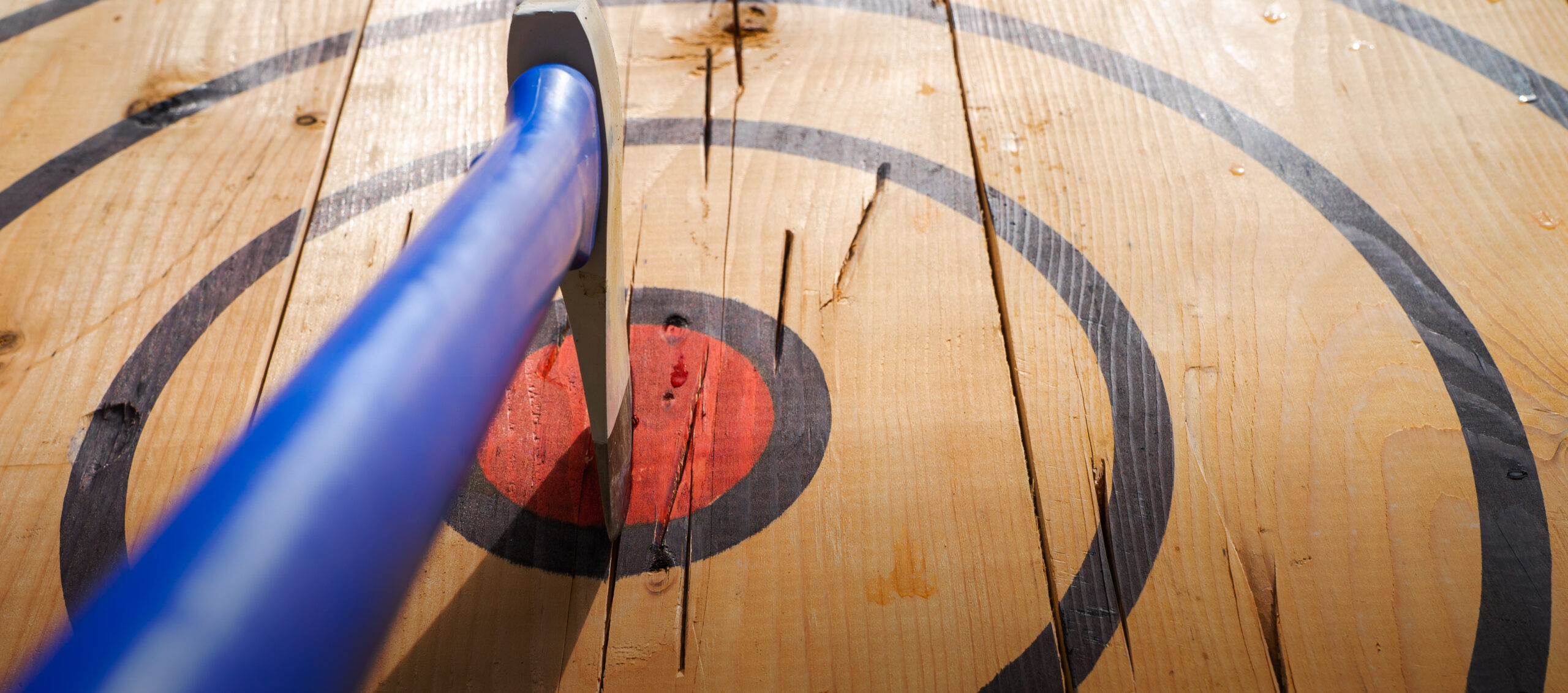Study the Axe Throwing Denver Scene: What You Need to Know
Study the Axe Throwing Denver Scene: What You Need to Know
Blog Article
The Fun of Axe Throwing: Exactly How This Sport Incorporates Skill and Adrenaline for a Good Time
Axe throwing has arised as an astounding sporting activity that masterfully links the demand for exact skill with the rush of adrenaline, offering individuals a one-of-a-kind and appealing experience. The act of tossing an axe towards a target demands focus and strategy, simultaneously fostering an ambience of sociability and pleasant competition.
The Beginnings of Axe Throwing
Axe throwing, a recreational activity that has acquired substantial popularity in current years, traces its roots back to ancient times. This primal sport dates back to early human background, when axes were largely utilized as weapons and tools. The earliest records of axe usage in competitive contexts are found amongst the Celts and Vikings, who tossed axes for sporting activity as well as in battle training. The method was not simply a leisure activity but an important skill for survival and war.
Medieval European warriors, especially throughout the Middle Ages, exercised axe tossing as part of their martial training. The Francisca, a kind of throwing axe made use of by the Franks, ended up being famous for its lethal precision. This standard tool was developed to be thrown at enemy shields and armor, showcasing its twin utility in both sporting activity and battle.
In more recent background, axe tossing saw a resurgence in the logging camps of North America in the 20th and 19th centuries. Lumberjacks would certainly engage in pleasant competition, testing their accuracy and strength by aiming at wooden targets. This development from a survival ability to a recreational activity has led the way for its modern revival, with committed locations and organizations currently celebrating the sport worldwide.
Tools You Required
Understanding the rich background of axe throwing improves the gratitude of the sporting activity's modern-day model. For affordable and recreational axe throwing, the most typically made use of type is the hatchet, typically evaluating in between 1.25 to 2 extra pounds with a deal with length of around 16 inches.
Equally vital is the target. Law targets are built from timber, with softwood selections like pine or cottonwood being preferred for their capability to hold the axe and take in. The target is typically split into five concentric circles, each with a particular factor value, to assist in rating.
Security gear, however typically forgotten, is vital. Safety handwear covers can enhance grasp and stop sores, while closed-toed shoes are a should to shield feet from dropped axes (axe throwing denver). A well-lit, large tossing location, total with safety barriers, ensures a controlled atmosphere where individuals can concentrate on honing their abilities.
Standard Techniques Described
Mastering the essential strategies of axe throwing is important for both safety and proficiency. The leading hand ought to be positioned straight below the axe head, while the non-dominant hand supports the end of the take care of.
Next, focus on the stance. find out this here Stand with your feet shoulder-width apart, ensuring your body is stabilized. Your dominant foot should be a little forward, lining up with your target. This positioning help in maintaining stability and directing power properly towards the target.

Safety First
Making certain safety in axe throwing is critical to developing a enjoyable and injury-free experience. Precaution start with the place layout. A well-designed axe tossing facility functions clear demarcations in between tossing lanes, strong backdrops to capture stray axes, and non-slip floor covering to stop mishaps. Additionally, adequate lights is critical to assist participants preserve visual precision and spatial understanding.
Advantages of Axe Throwing
Axe tossing deals a myriad of advantages that extend beyond basic recreation. Literally, it supplies a full-body exercise, engaging muscles in the arms, shoulders, back, and core. The repetitive movement of tossing the axe likewise enhances hand-eye sychronisation and fine motor abilities. For try this out those aiming to enhance their total physical fitness, axe throwing can act as a engaging and dynamic type of workout.
Psychologically, axe throwing calls for accuracy, emphasis, and method, making it an outstanding method to develop cognitive skills. The concentration needed to hit the target can serve as a type of mindfulness, enabling participants to remove their minds and decrease anxiety. This mental involvement can be particularly useful in aiding individuals develop better analytic abilities and mental durability.
Socially, axe throwing is usually appreciated in group setups, promoting team-building and camaraderie. Whether as component of a corporate event or a laid-back trip with friends, the sport motivates interaction and cooperation. Additionally, the communal experience of finding out and enhancing together can strengthen partnerships and produce lasting memories.
Verdict

The earliest records of axe usage in affordable contexts are discovered amongst the Celts and Vikings, that tossed axes for sporting activity as well as in combat training. Launch the axe when your hands are about at eye degree, permitting the axe's all-natural turning to guide it in the direction of the target.
A properly designed axe tossing center functions clear separations between tossing lanes, tough backgrounds to capture roaming axes, and non-slip flooring to prevent accidents. Individuals should be advised on the proper way to throw the axe and handle, emphasizing controlled, deliberate motions over powerful throws.
In recap, axe throwing stands out as a sporting activity that masterfully integrates adrenaline, accuracy, and ability.
Report this page